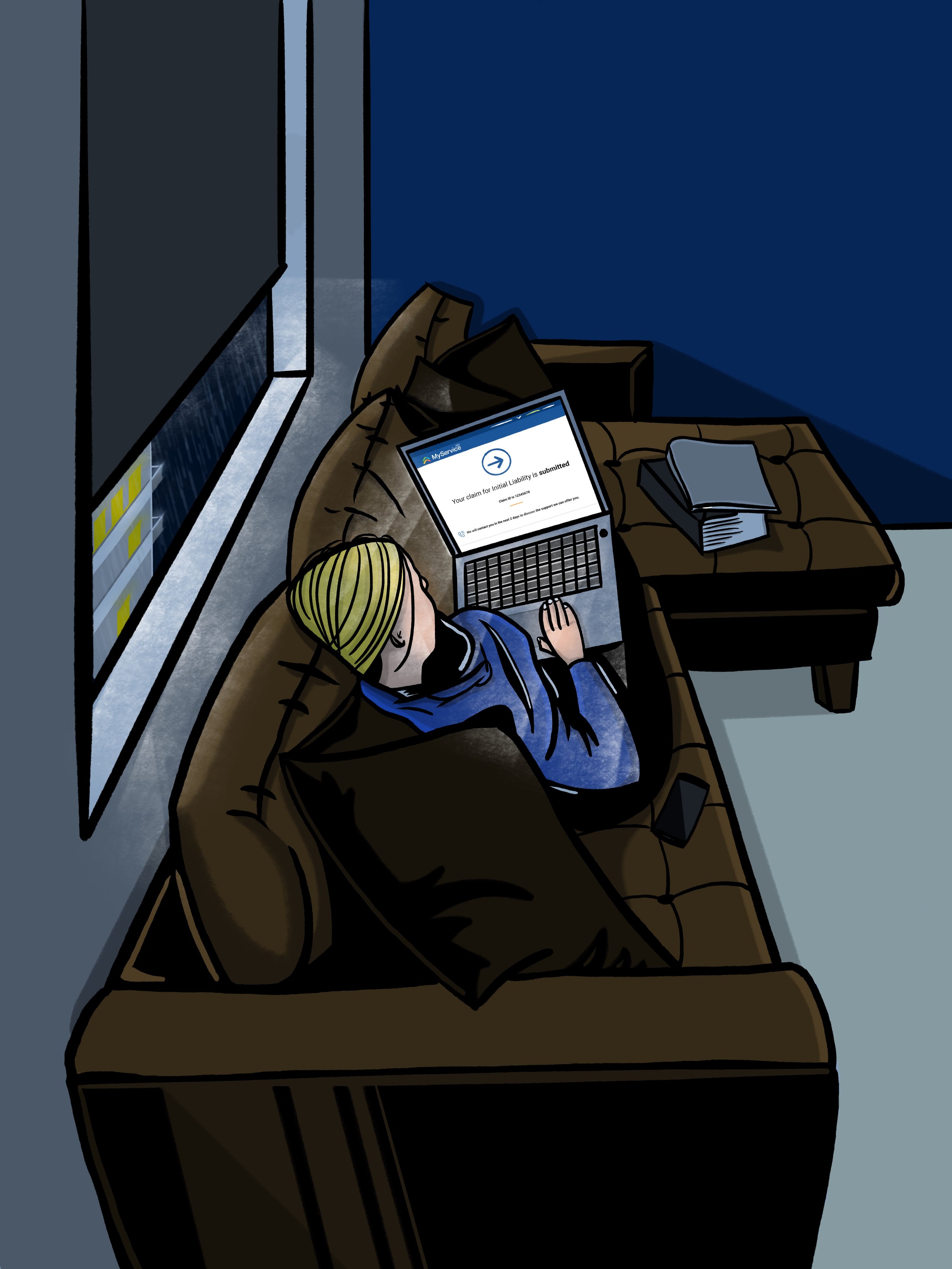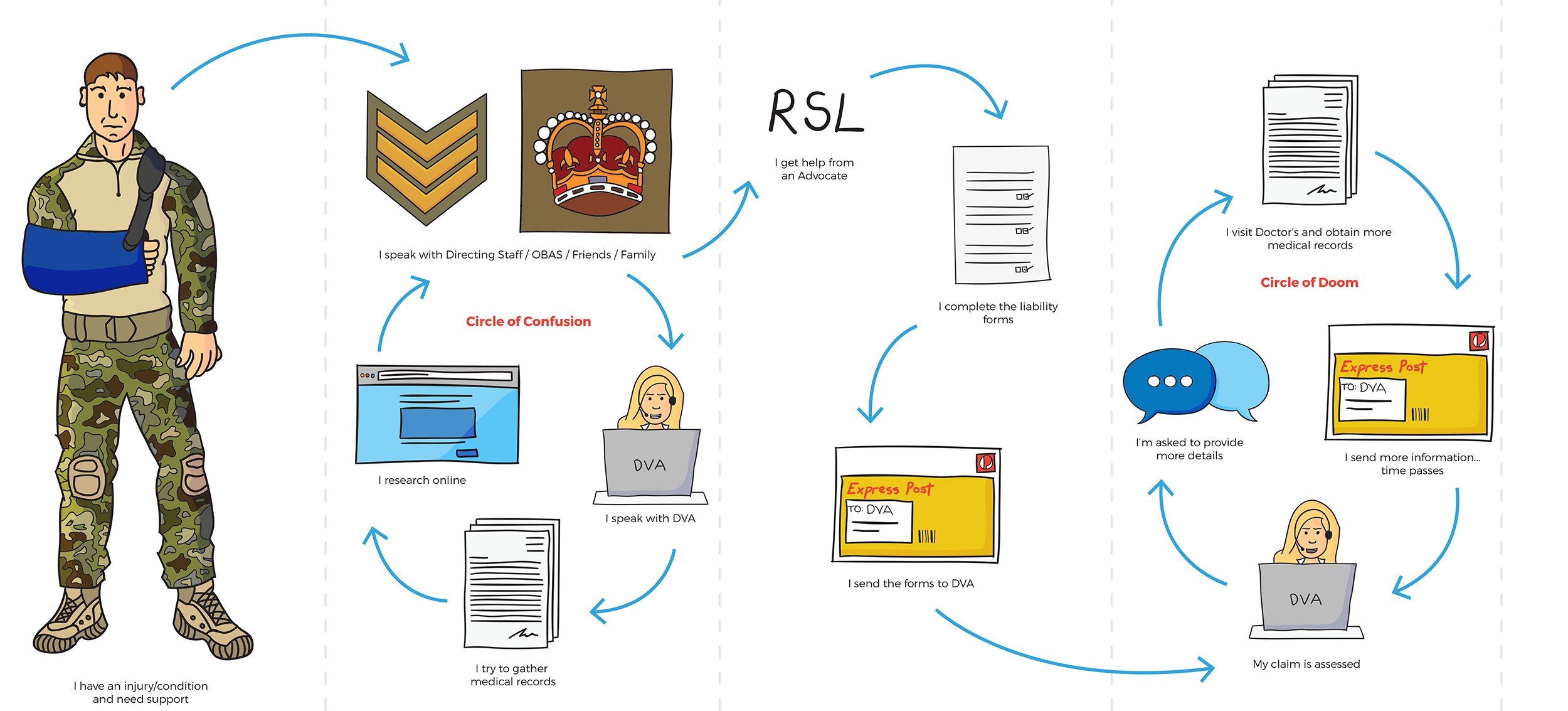MyService: Designing for long-term impact.
MyService is a digital platform providing critical support to Australians, including vulnerable communities. The project involved sustained user research, iterative design, and a collaborative, multi-team approach ensuring user-centricity, inclusivity, and accessibility. By embedding long-term research strategies, MyService was designed to adapt to evolving needs while delivering seamless user experiences. A structured design cadence, centralised tooling, and close partnerships with development teams yielded a robust platform built for trust, reliability, and future growth, reflecting stakeholder and community input at every step.





Project Overview
MyService is a digital platform that provides critical support and services to Australians, including vulnerable communities. This work required a deep commitment to research, long-term engagement, and a conscious approach to how design choices would affect user engagement and accessibility. The goal was not just to create a functional platform—it was about building trust, ensuring inclusivity, and designing a system that would remain adaptable and sustainable over time.
Working across multiple design and development scrum teams, a structured and collaborative approach was needed to ensure consistency, innovation, and user-centred decision-making. Given the scale of MyService and the sensitivity of its user base, a strategy focused on long-term research objectives, iterative design cycles, and extensive engagement with the broader community was adopted.
Long-Term Research and Engagement with Vulnerable Users:
From the outset, it was recognised that designing for MyService required an ethical, thoughtful research approach. Many of the users involved were navigating complex life circumstances, meaning their needs and experiences could change over time. To truly understand these evolving needs, long-term research strategies were embedded into the design process.
Longitudinal studies were implemented to track user interactions and outcomes over extended periods, allowing the team to observe how engagement with MyService evolved. This helped identify pain points that might not be immediately visible in short-term research and enabled ongoing refinements based on real user behaviour.
Working with vulnerable groups required especially mindful research methodologies. Attitudinal and behavioural research was prioritised to respect the dignity, privacy, and emotional well-being of participants. Methods such as contextual inquiry, in-depth interviews, and moderated usability testing provided deep insights while maintaining ethical research practices. Additionally, community organisations and advocates were engaged to ensure that the voices of underrepresented users were heard and their concerns addressed meaningfully.
Iterative Design and Multi-Team Collaboration:
Given the complexity of the MyService product, the design approach was iterative, ensuring that every decision was validated, tested, and refined before implementation. A structured Design Cadence was adopted that aligned with multiple scrum teams, enabling a continuous cycle of ideation, prototyping, testing, and refinement.
Designers worked across multiple features and service touchpoints, ensuring consistency while adapting to the specific needs of different user groups. To maintain cohesion across such a large design team, the following was established:
A centralised Figma system: A well-structured, reusable design system that allowed designers across all teams to maintain consistency in components, patterns, and accessibility standards.
Regular design critiques and playback sessions: Ensured that insights from research directly influenced design decisions and that all team members had visibility into each other’s work.
Close collaboration with development teams: Embedding designers within scrum teams ensured that design intent was communicated clearly and implemented correctly in the final product.
Broader Community Impact and Sustainable Design Practices:
One of the key objectives of MyService was to create a digital service that was not only accessible and reliable but also supported long-term engagement within the community. The research considered not just the immediate user journey but also how MyService fit into people’s lives over months and years.
The team explored how engagement levels changed over time and identified barriers that might prevent continued use. This included understanding digital literacy challenges, accessibility needs, and the impact of life events on service engagement. Insights gained informed strategies for improving onboarding, simplifying key interactions, and providing ongoing support mechanisms tailored to different user needs.
Accessibility was a cornerstone of the design process. From the outset, WCAG 2.1 AA compliance standards were integrated into every stage of design and development, ensuring that MyService could be accessed by people with diverse abilities. Accessibility specialists and user advocacy groups were engaged to validate the solutions.
Conclusion:
The MyService project exemplified how deep, sustained research and iterative design can drive meaningful impact in digital government services. Maintaining a strong user-centred focus while delivering a scalable, sustainable product was a key achievement.
Through long-term research engagement, ethical research practices, and a structured design approach, a platform was built that not only meets current user needs but is adaptable to future challenges. This work has laid the foundation for ongoing improvements, ensuring that MyService remains a trusted and effective platform for the people who need it most.
